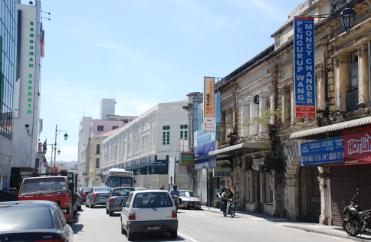EDUIMHE › Review of Higher Education Institutions in Regional Development 2008-10: The State of Penang in brief
Review of Higher Education Institutions in Regional Development 2008-10: The State of Penang in brief
The region under review:
boundaries, geography and population
Penang is the smallest state on the peninsular Malaysia. Located on the northwest coast, it covers an area of about 1 031 sq.km. Penang comprises of two parts: the Penang Island (293 sq.km) and the Province Wellesley (738 sq.km).
In 1991, the total population was just over one million and now it is estimated to be 1.5 million, which is more than 5 % of the Malaysian population. The state's population has grown by an average annual rate of 1.7% between 2001 and 2008; this ranges at about the same magnitude as the whole country’s growth rate.
The population density is about 1 500 people per sq.km which is much higher than Malaysia's population density of about 84 inhabitants per sq.km.
The largest ethnic groups in Penang 2008 were Chinese (42%), Malays (41%), and Indians (10%). The share of the Chinese population in Malaysia was only 24% in 2004.
Governance
The Yang di-Pertuan Agong is Malaysia’s constitutional Head of State (constitutional monarch). The federal government is led by the Prime Minister.
The State of Penang's Head of State is the Yang di-Pertuan Negeri and the state government is lead by the Chief Minister.
The competencies for Malaysian higher education policy lie with the national Ministry for Higher Education, while there is also the national Ministry for Science, Technology, and Innovation. The Ministry for Human Resources is responsible for workforce development, training, and job placement.
Economy
The unemployment rate in Penang was nearly half of the national rate in 2004 (1.8% compared to 3.3%).
The state’s GDP has been growing at an average annual rate of more than 6% between 2002 and 2005; this corresponds to the national rates. During this time the GDP of the manufacturing and the service sector grew faster than the overall economy. The agricultural sector has been fluctuating around a growth rate of +5% during this time.
At the end of 2007, nearly 45% of all employed persons worked in the service sector and 36% in the manufacturing sector. In the context of the service sector, Penang is actively exploring the growth potential in the private education sector.
Penang start page | HE and research in Penang | Further reading and useful links
Documents connexes


